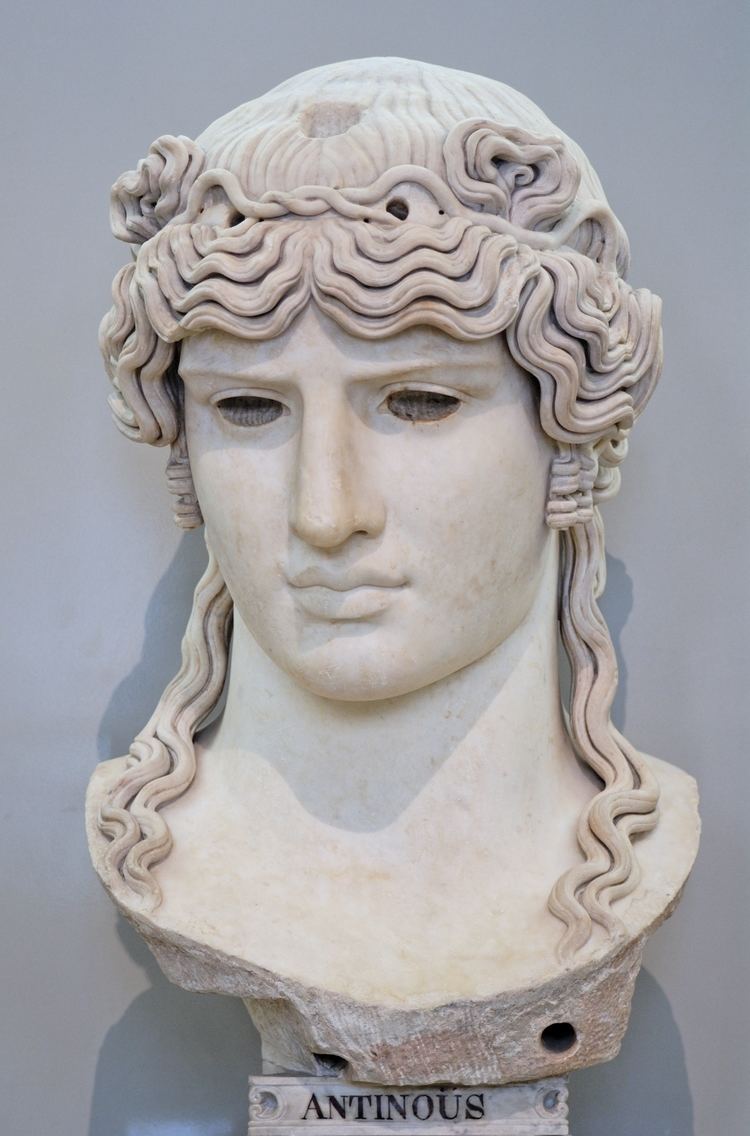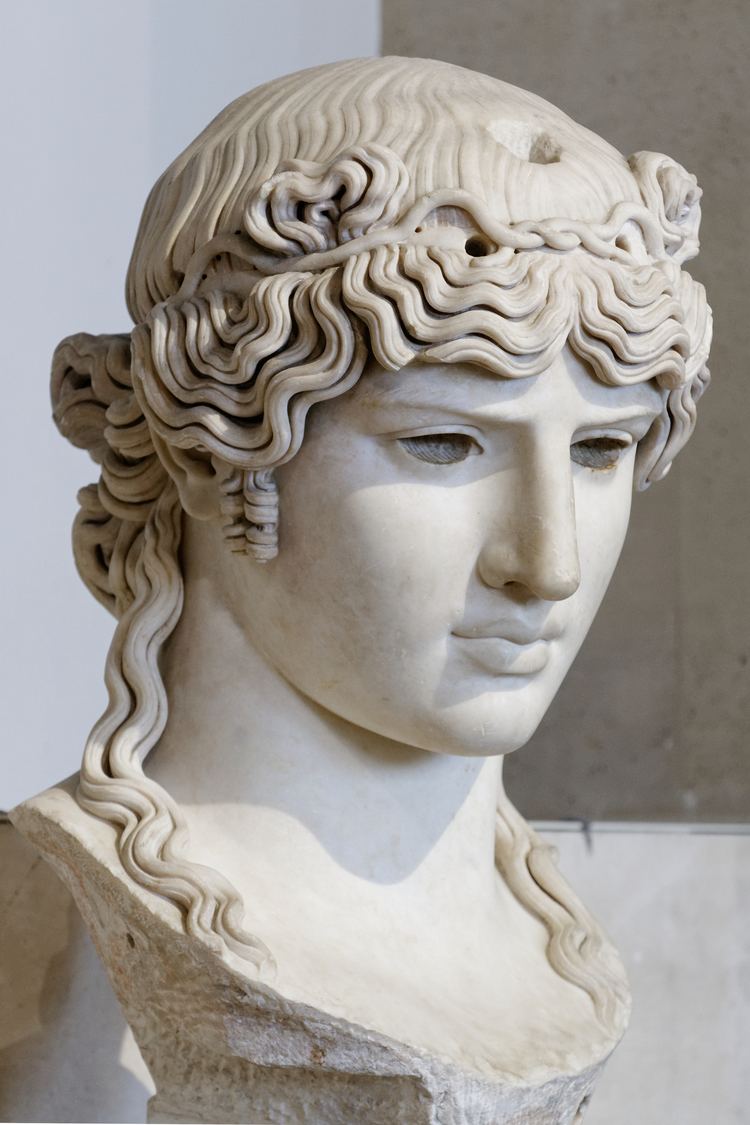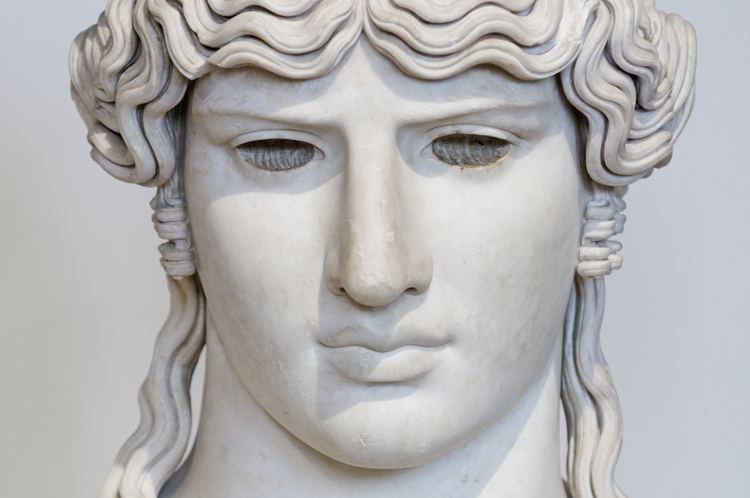Dimensions 95 cm (37 in) Year 130 AD | ||
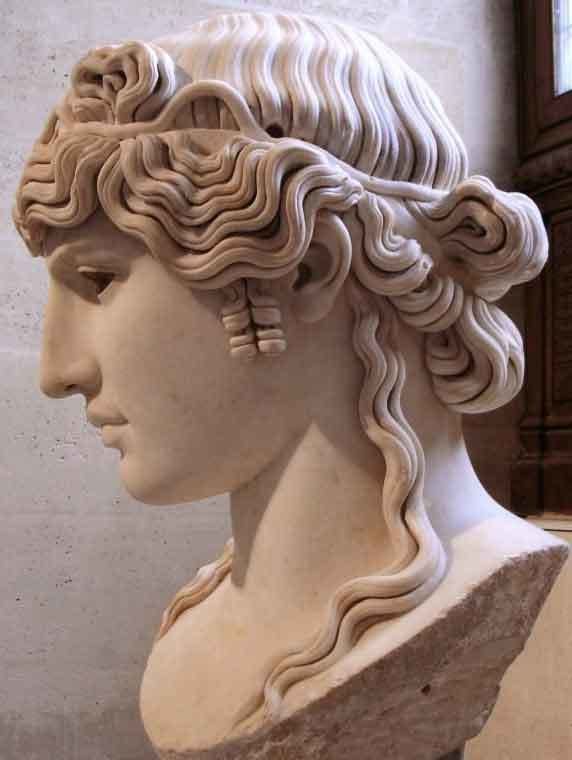 | ||
Similar Artwork at The Louvre, Other artwork | ||
The Antinous Mondragone is a unique colossal 0.95 m high marble example of the iconographic type of the deified Antinous, of c. 130 AD. It can be identified as him from the striated eyebrows, full lips, sombre expression and the head's twist down and to the right (reminiscent of that of the Lemnian Athena), whilst its smooth skin and elaborate, centre-parted hair mirror those of Hellenistic images of Dionysus and Apollo.
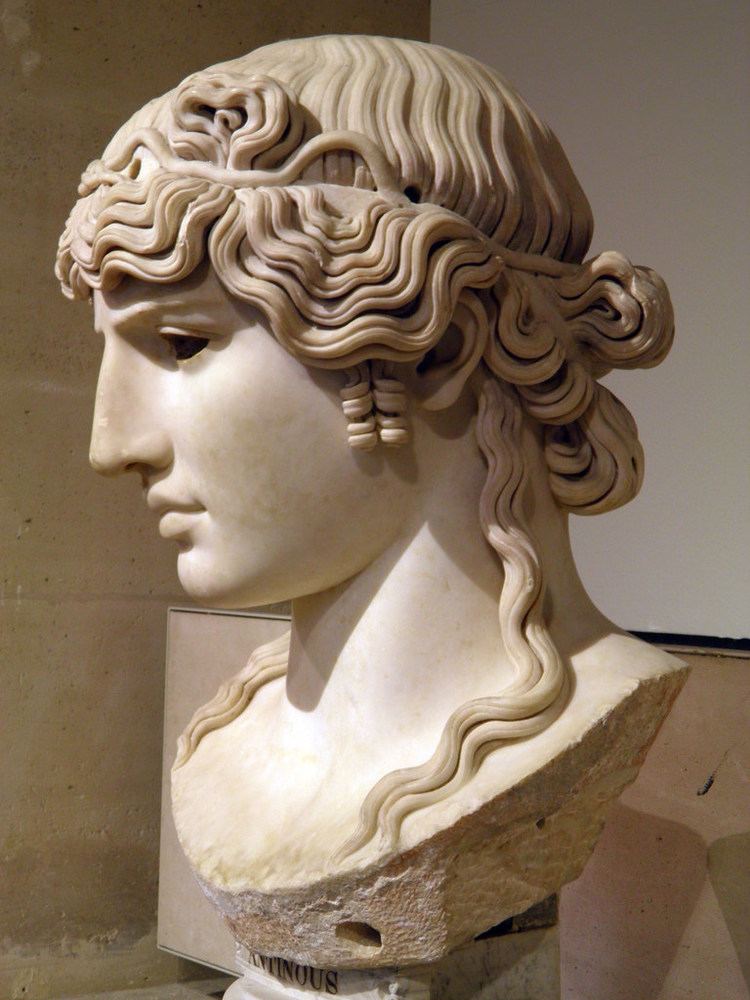
It formed part of a colossal acrolithic cult statue for the worship of Antinous as a god. 31 holes in 3 different sizes have been drilled for the attachment of a head-dress (possibly a lotus flower or uraeus) in metal; the sculpture has also lost eyes in metal, ivory or coloured stone.
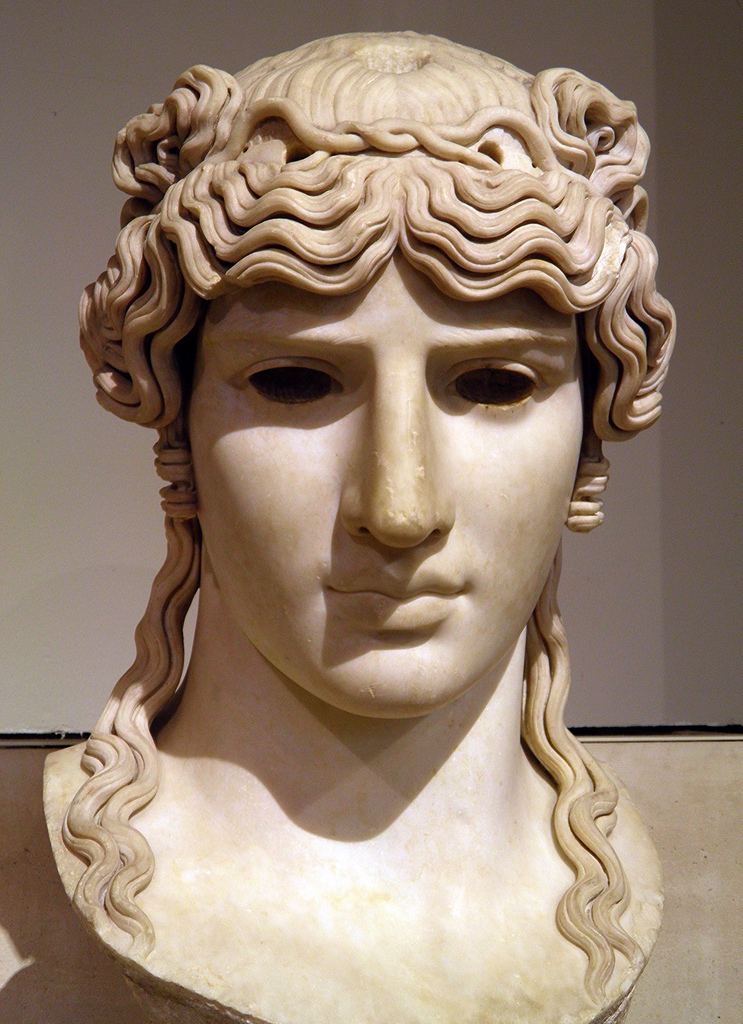
It is said to have been found at Frascati between 1713 and 1729 - it was certainly displayed as part of the Borghese collection at their Villa Mondragone there. Winckelmann made it better known by praising it in his History of Ancient Art, calling it "the glory and crown of art in this age as well as in others" and "so immaculate that it appears to have come fresh out of the hands of the artist". This was since, though Roman in date, it echoed the 5th century BC Greek style which Winckelmann preferred over Roman art.
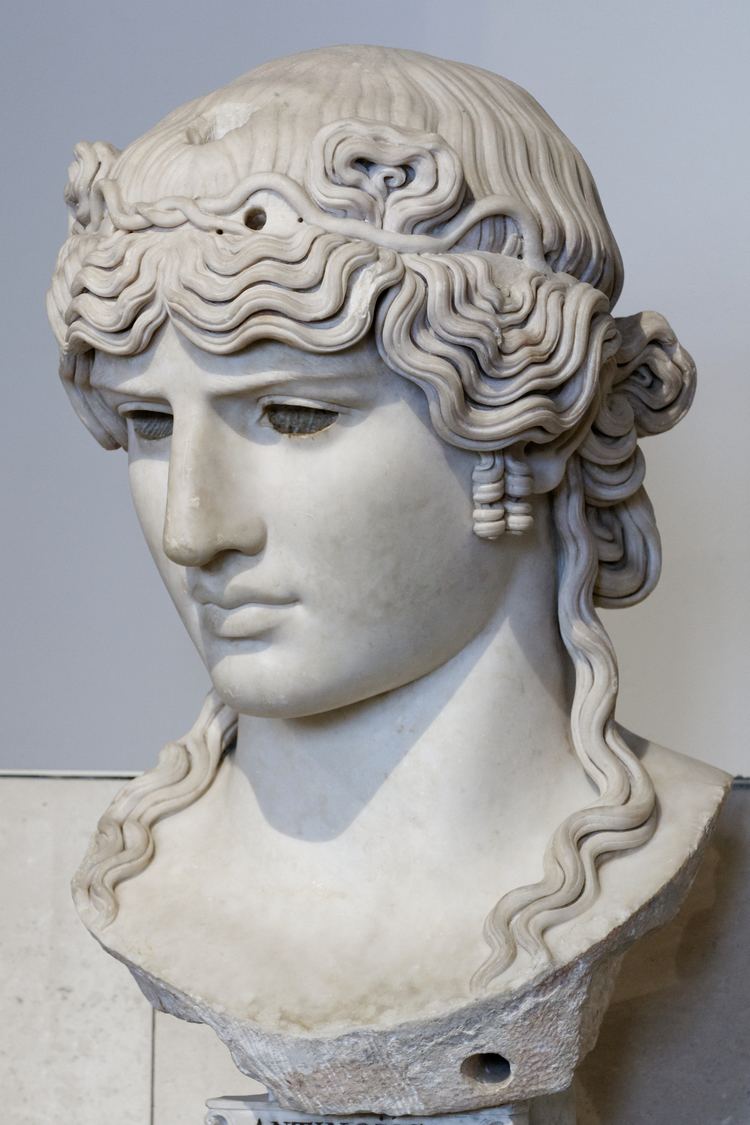
In 1807 it was bought with a large part of the Borghese collections for Napoleon. Sometime since a brown layer of wax was added to give an opaque finish, along with plaster round the base of the neck to make the statue look more complete - these were both removed in recent cleaning. It is now held at the Louvre Museum, though it toured to the Henry Moore Institute, Leeds in 2006 for the exhibition "Antinous: The Face of the Antique", and is returned to the United Kingdom for the British Museum's exhibition "Hadrian: Empire and Conflict" in 2008.
